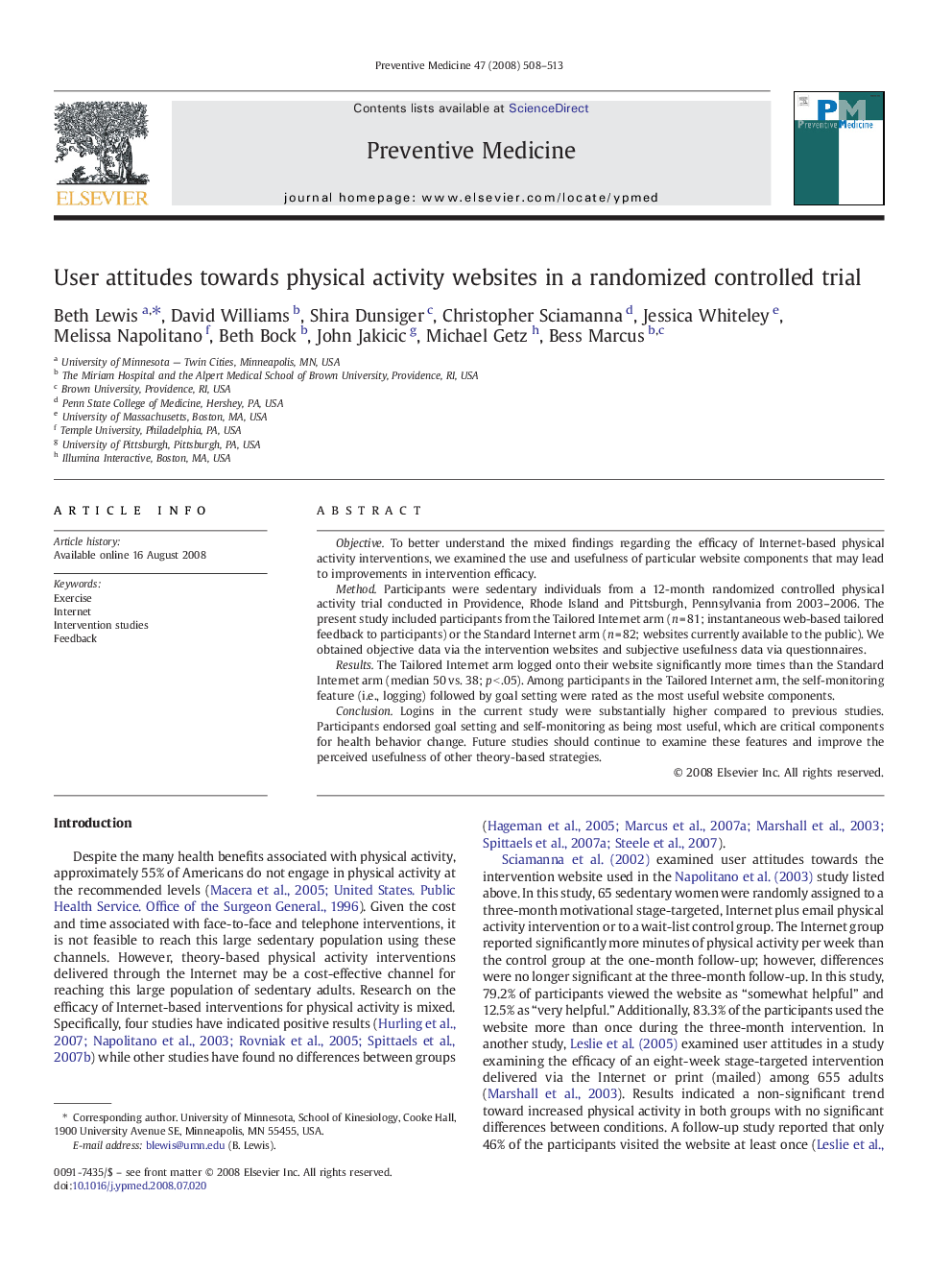| Article ID | Journal | Published Year | Pages | File Type |
|---|---|---|---|---|
| 3101365 | Preventive Medicine | 2008 | 6 Pages |
ObjectiveTo better understand the mixed findings regarding the efficacy of Internet-based physical activity interventions, we examined the use and usefulness of particular website components that may lead to improvements in intervention efficacy.MethodParticipants were sedentary individuals from a 12-month randomized controlled physical activity trial conducted in Providence, Rhode Island and Pittsburgh, Pennsylvania from 2003–2006. The present study included participants from the Tailored Internet arm (n = 81; instantaneous web-based tailored feedback to participants) or the Standard Internet arm (n = 82; websites currently available to the public). We obtained objective data via the intervention websites and subjective usefulness data via questionnaires.ResultsThe Tailored Internet arm logged onto their website significantly more times than the Standard Internet arm (median 50 vs. 38; p < .05). Among participants in the Tailored Internet arm, the self-monitoring feature (i.e., logging) followed by goal setting were rated as the most useful website components.ConclusionLogins in the current study were substantially higher compared to previous studies. Participants endorsed goal setting and self-monitoring as being most useful, which are critical components for health behavior change. Future studies should continue to examine these features and improve the perceived usefulness of other theory-based strategies.
